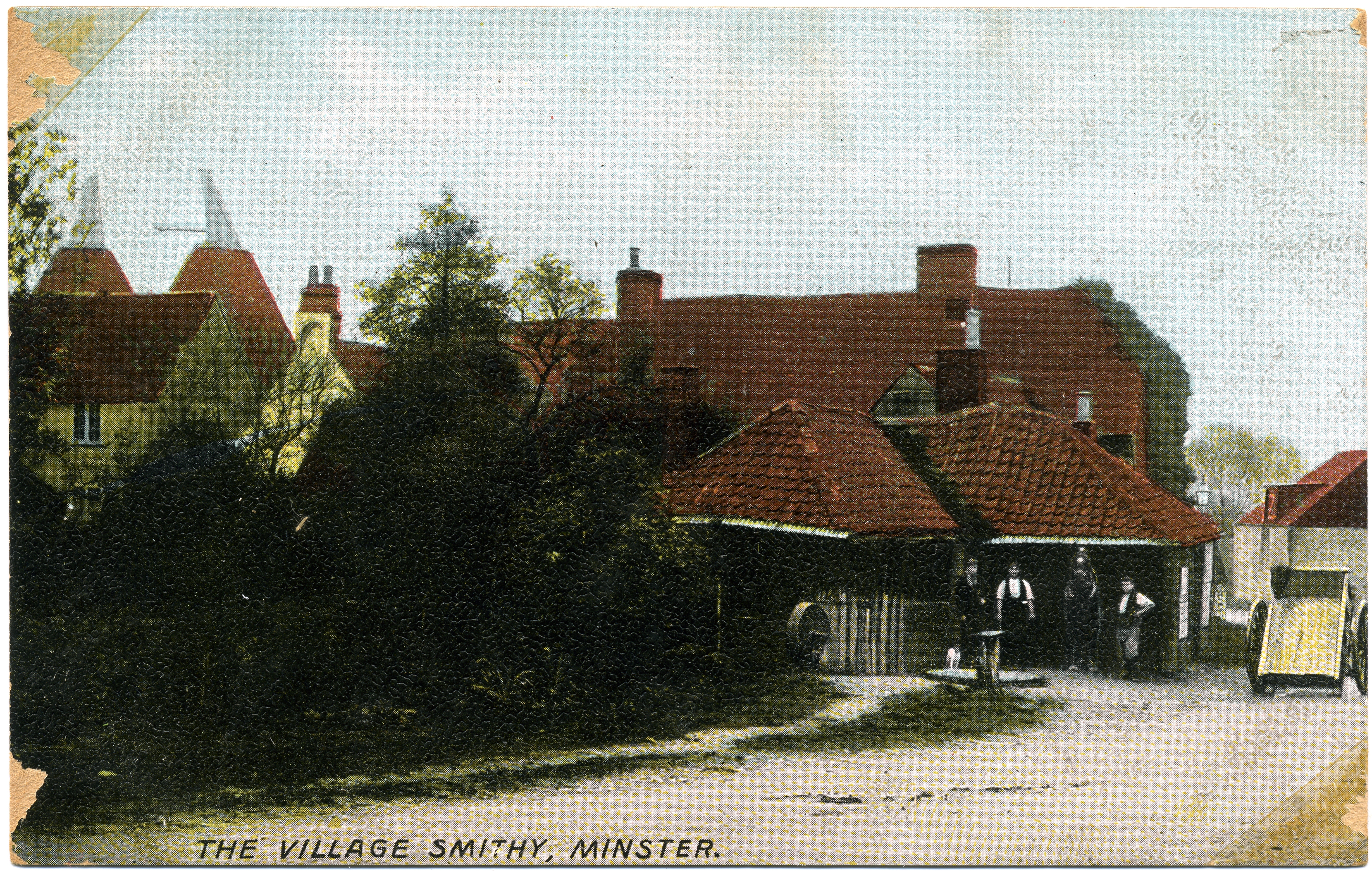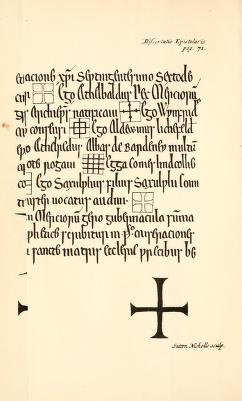|
Minster-in-Thanet
Minster, also known as Minster-in-Thanet, is a village and civil parish in the Thanet District of Kent, England. It is the site of Minster in Thanet Priory. The village is west of Ramsgate (which is the post town) and to the north east of Canterbury; it lies just south west of Kent International Airport and just north of the River Stour. Minster is also the "ancient capital of Thanet".Minster-In-Thanet ; retrieved on 22 May 2008 At the 2011 Census the hamlet of Ebbsfleet was included. Toponymy The name ultimately comes from the ''monasterium'', denoting t ...[...More Info...] [...Related Items...] OR: [Wikipedia] [Google] [Baidu] |
Domneva
Domne Eafe (; floruit late 7th century), also ''Domneva'', ''Domne Éue'', ''Æbbe'', ''Ebba'', was, according to the Kentish royal legend, a granddaughter of King Eadbald of Kent and the foundress of the double monastery of Minster in Thanet Priory at Minster-in-Thanet during the reign of her cousin King Ecgberht of Kent. A 1000-year-old confusion with her sister Eormenburg means she is often now known by that name. Married to Merewalh of Mercia, she had at least four children. When her two brothers, Æthelred and Æthelberht, were murdered (and subsequently venerated as saintly martyrs) she obtained the land in Thanet to build an abbey, from a repentant King Ecgberht. Her three daughters all went on to become abbesses and saints, the most famous of which, Mildrith, ended up with a shrine in St Augustine's Abbey, Canterbury. Origins According to the Kentish royal legend, Domne Eafe's father was Eormenred, son of King Eadbald of Kent and Emma of Austrasia, and grandson of Æthel ... [...More Info...] [...Related Items...] OR: [Wikipedia] [Google] [Baidu] |
Mildrith
Saint Mildrith, also Mildthryth, Mildryth and Mildred, ( ang, Mildþrȳð) (born c. 660, died after 732), was a 7th and 8th-century Anglo-Saxon abbess of the Abbey at Minster-in-Thanet, Kent. She was declared a saint after her death, and later her remains were moved to Canterbury. Life and family Mildrith was the daughter of King Merewalh of Magonsaete, an area similar to the present day Herefordshire, a sub-kingdom of Mercia. Her mother was Domne Eafe (also sometimes named as Saint Eormenburga), herself a great-granddaughter of Æthelberht of Kent, and as such appearing in the so-called Kentish Royal Legend. Her sisters Milburga of Much Wenlock and Mildgyth were also considered saints, and Mildrith, along with her extended family, features in the Kentish Royal Legend, also known as the "Mildrith Legend". In the 11th century, Goscelin wrote a hagiography of Mildrith, the ''Vita Mildrethae''.Rollason (1982) p. 16 Another work, the ''Nova Legenda Anglie'' of 1516, gives an ex ... [...More Info...] [...Related Items...] OR: [Wikipedia] [Google] [Baidu] |
Minster In Thanet Priory
Minster Abbey is the name of two abbeys in Minster-in-Thanet, Kent, England. The first was a 7th-century foundation which lasted until the Dissolution of the Monasteries. Beside its ruins is St Mildred's Priory, a Benedictine community of women founded in 1937. History According to the Kentish Royal Legend, Minster Abbey was a double monastery founded AD 670 by Domne Eafe or Domneva; Eormenburg or Ermenburga is either her original name or that of her sister. Domne Eafe was a Kentish princess who accepted land for a house of prayer as Weregild for the killing of her brothers Æthelred and Æthelberht. The story is that she was granted as much land as her pet deer could run around in a day, whence the deer used to symbolise Minster-in-Thanet. Domne Eafe was succeeded as abbess in about 700 by her daughter Mildrith (Mildred), who was succeeded by Edburga, daughter of King Centwine of the West Saxons. At the end of the eighth century the abbess was Selethryth, sister of King Offa ... [...More Info...] [...Related Items...] OR: [Wikipedia] [Google] [Baidu] |
Edburga Of Minster-in-Thanet
Saint Edburga of Minster-in-Thanet (also known as Eadburh and Bugga) was a princess of Wessex, and abbess of Minster-in-Thanet. She is regarded as a saint. Life Edburga was the only daughter of King Centwine and Queen Engyth of Wessex. According to Stephen of Ripon, Engyth was a sister of Queen Iurminburh, second wife of King Ecgfrith of Northumbria. Centwine was not a Christian, but towards the end of his reign, converted and became a monk. Edburga was a friend and student of Saint Mildrith, abbess of Minster-in-Thanet."Edburga (Eadburh, Bugga) of Minster", ''The Oxford Dictionary of Saints (5 rev) (David Farmer, ed.) OUP, 2011 She was reputed to be zealous in the pursuit of knowledge. In 716, Edburga bec ... [...More Info...] [...Related Items...] OR: [Wikipedia] [Google] [Baidu] |
Centwine Of The West Saxons
Centwine (died after 685) was King of Wessex from c. 676 to 685 or 686, although he was perhaps not the only king of the West Saxons at the time. The ''Anglo-Saxon Chronicle'' reports that Centwine became king c. 676, succeeding Æscwine. Bede states that after the death of King Cenwalh: "his under-rulers took upon them the kingdom of the people, and dividing it among themselves, held it ten years". Bede's dismissal of Æscwine and Centwine as merely sub-kings may represent the views of the supporters of the King Ine, whose family ruled Wessex in Bede's time. However, if the West Saxon kingdom did fragment following Cenwalh's death, it appears that it was reunited during Centwine's reign. An entry under 682 in the ''Anglo-Saxon Chronicle'' records that "Centwine drove the Britons to the sea". This is the only event recorded in his reign. The ''Carmina Ecclesiastica'' of Aldhelm, Bishop of Sherborne (died 709), written a generation after Centwine's reign, records that he won thre ... [...More Info...] [...Related Items...] OR: [Wikipedia] [Google] [Baidu] |
Kent International Airport
Manston Airport was a British airport. It was branded as Manston, Kent International Airport and was located in the parish of Minster-in-Thanet and partly adjacent to the village of Manston in the Thanet district of Kent, England, north-east of Canterbury. Formerly the site of RAF Manston, it was briefly known as London Manston Airport. The single runway was located about from the coastline at above sea level. It had the 11th-longest civilian runway in the United Kingdom (after Heathrow's two runways, Gatwick, Birmingham, Manchester, Stansted, East Midlands, Doncaster, Prestwick and Belfast International), in length. Manston was capable of handling some of the larger long-haul aircraft, but the runway was not long enough for the largest passenger or freight types at their maximum takeoff weights. The runway was originally built with three "lanes" during the Second World War to handle emergencies, and is among the widest in Europe. Since 2015 the airport has been used as ... [...More Info...] [...Related Items...] OR: [Wikipedia] [Google] [Baidu] |
Ebbsfleet, Thanet
Ebbsfleet is a hamlet near Ramsgate, Kent, at the head of Pegwell Bay. Historically it was a peninsula on the southern coast of the Isle of Thanet, marking the eastern end of the Wantsum Channel that separated Thanet from the Kentish mainland. It is in the civil parish of Minster-in-Thanet. Pegwell Bay is a natural harbour on the part of the coast nearest to the Continent, and consequently, Ebbsfleet is associated with two important arrivals in English history: Hengist and Horsa in 449 AD, said to have led the Anglo-Saxons in their conquest of Britain; and Augustine of Canterbury in 597 AD, who converted much of England to Christianity. Ebbsfleet is the titular see of the Bishop of Ebbsfleet, an episcopal visitor for the Province of Canterbury. Geography Ebbsfleet Lane marks the line of the peninsula today. The Wantsum Channel silted up and was reclaimed in the 15th century; all that remains of it is the channel of the River Stour, which enters the sea by Richborough P ... [...More Info...] [...Related Items...] OR: [Wikipedia] [Google] [Baidu] |
Thanet District
Thanet is a local government district in Kent, England. Formed under the Local Government Act 1972, it came into being on 1 April 1974 and is governed by Thanet District Council. On the north eastern tip of Kent, it is predominantly coastal, with north, east and southeast facing coastlines, and is bordered by the City of Canterbury district to the west and the Dover district to the south. The main towns are Margate, Ramsgate and Broadstairs. History The Isle of Thanet is the major part of the district. Formed over 7,000 years ago and separated from the mainland by the Wantsum Channel, it has always borne the brunt of invasions from the Continent. An Isle of Thanet Rural District had existed from the Local Government Act 1894 until it was abolished in 1935 to form part of Eastry Rural District. The current District was formed in 1974, by the addition of the area over which was once the Wantsum Channel, including the settlement of Sarre. Governance The District Counci ... [...More Info...] [...Related Items...] OR: [Wikipedia] [Google] [Baidu] |
Abbess
An abbess (Latin: ''abbatissa''), also known as a mother superior, is the female superior of a community of Catholic nuns in an abbey. Description In the Catholic Church (both the Latin Church and Eastern Catholic), Eastern Orthodox, Coptic and Anglican abbeys, the mode of election, position, rights, and authority of an abbess correspond generally with those of an abbot. She must be at least 40 years old and have been a nun for 10 years. The age requirement in the Catholic Church has evolved over time, ranging from 30 to 60. The requirement of 10 years as a nun is only eight in Catholicism. In the rare case of there not being a nun with the qualifications, the requirements may be lowered to 30 years of age and five of those in an "upright manner", as determined by the superior. A woman who is of illegitimate birth, is not a virgin, has undergone non-salutory public penance, is a widow, or is blind or deaf, is typically disqualified for the position, saving by permission of ... [...More Info...] [...Related Items...] OR: [Wikipedia] [Google] [Baidu] |
Viking
Vikings ; non, víkingr is the modern name given to seafaring people originally from Scandinavia (present-day Denmark, Norway and Sweden), who from the late 8th to the late 11th centuries raided, pirated, traded and settled throughout parts of Europe.Roesdahl, pp. 9–22. They also voyaged as far as the Mediterranean, North Africa, Volga Bulgaria, the Middle East, and North America. In some of the countries they raided and settled in, this period is popularly known as the Viking Age, and the term "Viking" also commonly includes the inhabitants of the Scandinavian homelands as a collective whole. The Vikings had a profound impact on the early medieval history of Scandinavia, the British Isles, France, Estonia, and Kievan Rus'. Expert sailors and navigators aboard their characteristic longships, Vikings established Norse settlements and governments in the British Isles, the Faroe Islands, Iceland, Greenland, Normandy, and the Baltic coast, as well as ... [...More Info...] [...Related Items...] OR: [Wikipedia] [Google] [Baidu] |
William George Searle
William George Searle (1829–1913) was a 19th-century British historian and a fellow of Queens' College, Cambridge. His works include ''Ingulf and the Historia Croylandensis'', ''Onomasticon Anglo-Saxonicum: A List of Anglo-Saxon Proper Names from the Time of Beda to that of King John'' and ''Anglo-Saxon Bishops, Kings and Nobles''. He also published a history of Queens' College. He was the father of the physicist George Frederick Charles Searle George Frederick Charles Searle FRS (3 December 1864 – 16 December 1954) was a British physicist and teacher. He also raced competitively as a cyclist while at the University of Cambridge. Biography Searle was born in Oakington, Cambridgeshire .... ''Geni.com''. Retrieved 28 December 2018. References External lin ...
|







